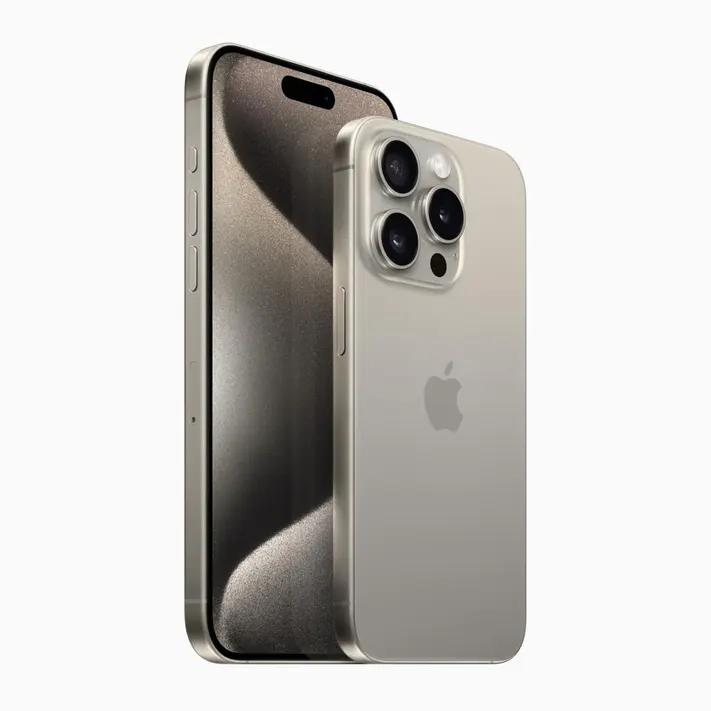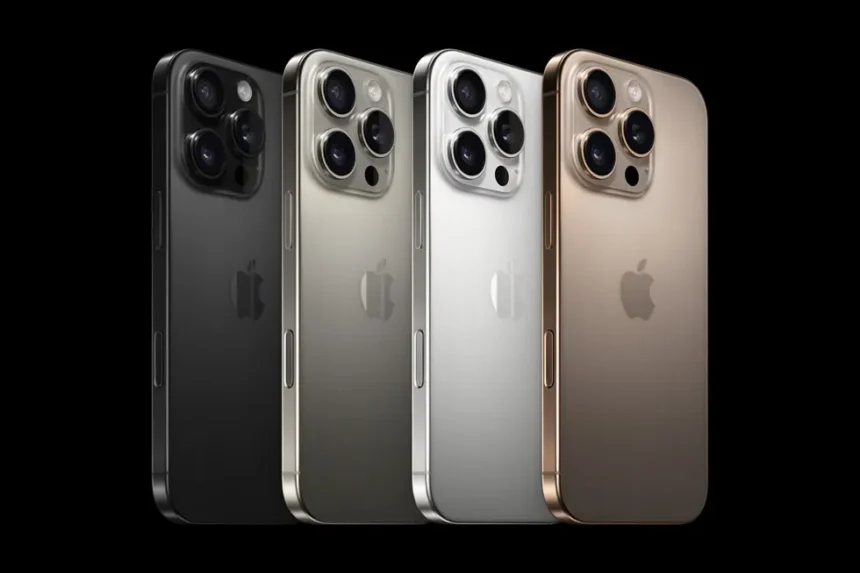The iPhone 16 Pro vs iPhone 16 Pro Max are the two flagship models from Apple’s latest release, both boasting cutting-edge technology and features. While they share many similarities, there are key differences that could influence which model you choose. In this article, we’ll dive deep into the differences between the iPhone 16 Pro and 16 Pro Max, so you can make an informed decision.
Design and Display: Size Really Matters
One of the most obvious differences between the iPhone 16 Pro and iPhone 16 Pro Max is the size. The iPhone 16 Pro comes with a 6.1-inch Super Retina XDR display, while the iPhone 16 Pro Max has a larger 6.7-inch Super Retina XDR display. Both displays support ProMotion technology with 120Hz refresh rates, HDR10, and Dolby Vision, ensuring smooth and vivid visuals.
The Pro Max’s larger screen makes it ideal for users who love media consumption, gaming, or productivity on the go. The smaller iPhone 16 Pro, however, offers a more compact and one-hand-friendly experience, perfect for users who prioritize portability.
Performance: Both Powerhouses, But Slight Edge to Pro Max
Both models are powered by Apple’s A18 Bionic chip, built on a 3nm process, making them incredibly fast and efficient. You can expect lightning-fast app launches, seamless multitasking, and superior battery efficiency. While both phones have identical processors, the iPhone 16 Pro Max might have a slight edge in handling extended performance-heavy tasks due to its larger cooling system.
For gaming enthusiasts or those using resource-intensive applications, the Pro Max may offer better sustained performance under prolonged use. However, in day-to-day tasks, both devices will feel equally fast.
Battery Life: The Pro Max Outlasts the Pro

Battery life is another critical difference. Thanks to its larger body, the iPhone 16 Pro Max houses a bigger battery, giving it a longer battery life compared to the iPhone 16 Pro. Apple claims up to 25 hours of video playback for the Pro Max, compared to 20 hours for the iPhone 16 Pro.
If you’re someone who spends a lot of time away from a charger or frequently travels, the extra battery life in the Pro Max could make a noticeable difference.
Camera Capabilities: Almost Identical, But Bigger Means Better
Both the iPhone 16 Pro and iPhone 16 Pro Max are equipped with a triple-lens camera system, including a 48MP main sensor, 12MP ultra-wide, and 12MP telephoto lens. Both models support ProRAW, 4K ProRes video, and Night Mode. However, the iPhone 16 Pro Max benefits from larger image sensors and better image stabilization, which could result in better low-light performance and sharper images.
For the average user, both models will produce stunning photos and videos, but if photography is a priority, the Pro Max has a slight advantage in terms of camera hardware.
iPhone 16 Pro Upgrade Rumored 256gb base storage report
Storage Options and Pricing
Both the iPhone 16 Pro and iPhone 16 Pro Max offer the same storage options, starting at 128GB, with options for 256GB, 512GB, and 1TB. The pricing difference between the two models primarily reflects the size and battery enhancements in the Pro Max.
- iPhone 16 Pro starts at $1,099.
- iPhone 16 Pro Max starts at $1,199.
Does the iPhone 16 Pro Have 120Hz?
Yes, the iPhone 16 Pro and iPhone 16 Pro Max both feature ProMotion technology, which means they support a 120Hz refresh rate. This leads to smoother scrolling, more responsive interactions, and an overall more fluid user experience, particularly noticeable when gaming or watching high-frame-rate content.
Does the iPhone 16 Pro Have a SIM Card Slot?
No, the iPhone 16 Pro and Pro Max have fully transitioned to eSIM technology, following the trend that began with previous models. This means there is no physical SIM card slot on either device. eSIM allows users to easily switch between carriers without the need for a physical SIM card, making it more convenient for frequent travelers or those managing multiple lines.
What’s New About the iPhone 16 Pro?
The iPhone 16 Pro introduces several exciting upgrades:
- A18 Bionic Chip: Apple’s most powerful and efficient processor yet.
- Larger Camera Sensors: Improved low-light performance and sharper images.
- ProMotion: 120Hz refresh rate for smoother performance.
- eSIM: Eliminating the SIM card slot entirely.
- Titanium Frame: For increased durability and a premium feel.
Is There a Fingerprint Sensor in the iPhone 16?
No, neither the iPhone 16 Pro nor the Pro Max features a fingerprint sensor. Instead, Apple continues to rely on its Face ID technology, which has been enhanced for faster and more accurate facial recognition. While some users may miss the convenience of a Touch ID sensor, Apple believes Face ID provides a higher level of security and convenience.
Will the iPhone 17 Have Touch ID?
There are ongoing rumors about Apple reintroducing Touch ID in future iPhones, but as of the iPhone 16 Pro and Pro Max, Touch ID remains absent. The company seems to be focusing on improving Face ID, but there’s speculation that future models, such as the iPhone 17, could bring back Touch ID in some form, possibly embedded under the display.
Which iPhone Has Touch ID in 2024?
As of 2024, the only iPhones that still have Touch ID are the iPhone SE models. The iPhone SE (2022), for example, retains the Touch ID sensor in the home button, catering to those who prefer fingerprint authentication over Face ID.
Why is Apple Not Bringing Back Touch ID?
Apple’s decision to stick with Face ID comes down to a combination of factors. Firstly, Face ID is highly secure and has been refined over several generations of iPhones. It offers a more seamless experience, allowing users to unlock their phones and authenticate payments without physically interacting with the device. Additionally, with the trend toward full-screen displays, there’s less room for traditional fingerprint sensors unless Apple opts for an under-display solution in the future.
Should You Upgrade to the iPhone 16 from the iPhone 13?
If you’re still using an iPhone 13, upgrading to the iPhone 16 Pro or Pro Max could be a substantial jump in terms of performance, camera quality, display technology, and battery life. The introduction of the A18 Bionic chip, ProMotion display, and the larger battery in both models makes the iPhone 16 a significant upgrade over the iPhone 13. However, if your iPhone 13 is still meeting your needs, and you don’t feel the urge for the latest features, you might choose to wait another year.
Conclusion: Which iPhone 16 is Better?
Choosing between the iPhone 16 Pro and iPhone 16 Pro Max ultimately comes down to your personal preferences. If you prefer a more portable device and don’t mind a slightly smaller screen, the iPhone 16 Pro is an excellent choice. However, if you value a larger display, longer battery life, and enhanced camera capabilities, the iPhone 16 Pro Max is the better option.
Both models offer premium performance, stunning displays, and advanced camera technology, so whichever one you choose, you’ll be getting a top-tier device.








